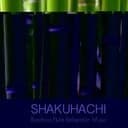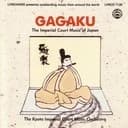Historical Origins and Cultural Significance
The In scale represents one of the fundamental pentatonic modes in traditional Japanese music theory, with roots extending back over a thousand years to the court music (gagaku) of the Heian period. Unlike Western scales that evolved from Greco-Roman musical traditions, the In scale developed within the context of Japanese Buddhist chant and indigenous Shinto ritual music, where its distinctive minor second interval creates a sense of tension and release that mirrors the philosophical concepts of impermanence and tranquility central to Japanese aesthetics. This scale has been extensively used in the performance of traditional Japanese instruments including the thirteen-stringed koto (zither), the shakuhachi (bamboo flute), and the three-stringed shamisen, where its pentatonic structure facilitates the microtonal inflections and pitch bending techniques characteristic of Japanese musical expression.
The theoretical framework surrounding the In scale connects to a broader system of Japanese modes that also includes the Hirajoshi and Iwato scales, each offering different emotional palettes while maintaining the five-note pentatonic structure. In traditional Japanese music pedagogy, these scales were not merely abstract theoretical constructs but living musical languages that conveyed specific seasonal associations, emotional states, and narrative contexts within theatrical forms such as Noh drama and Kabuki theater. The D In scale's formula of 1-4-2-1-4 semitones creates a unique sonic fingerprint that has remained remarkably consistent across centuries of Japanese musical development, preserving an authentic connection to Japan's cultural heritage even as it has been adapted for contemporary musical contexts.
Musical Character and Emotional Expression
The D In scale produces a sound world that feels simultaneously exotic and deeply contemplative to Western ears, characterized by the striking minor second interval between D and E♭ that immediately establishes a non-Western tonal center. This initial half-step creates a sense of harmonic ambiguity that prevents the scale from settling into familiar major or minor tonalities, instead inhabiting a liminal sonic space that evokes mist-covered mountains, temple gardens, and the refined simplicity of Japanese ink painting. The subsequent leap of a perfect fourth to G, followed by whole steps to A and B♭, provides breathing room after the initial tension, creating a distinctive melodic contour that rises and falls in ways fundamentally different from Western stepwise motion or blues-influenced pentatonic patterns.
When compared to the more familiar D Minor Pentatonic (D-F-G-A-C), the D In scale substitutes E♭ for F, eliminates C entirely, and adds B♭, resulting in a completely transformed harmonic landscape that lacks the blues-tinged character of Western pentatonic scales. Similarly, while the D Major scale projects brightness and resolution through its major third and major seventh, the D In scale avoids these characteristic Western intervals entirely, creating instead a sense of suspended time and meditative stillness. This unique intervallic structure makes the In scale particularly effective for expressing the Japanese aesthetic concept of "ma" (間)—the meaningful space between sounds—where silence and restraint carry as much expressive weight as the notes themselves.
Practical Applications
In contemporary music production, the D In scale has become an essential tool for composers working in film scores, anime soundtracks, and video game music seeking to evoke Japanese cultural settings or Eastern philosophical themes. Composers like Joe Hisaishi (known for his Studio Ghibli soundtracks) frequently employ Japanese pentatonic scales including the In mode to create instantly recognizable sonic landscapes that transport listeners to rural Japan, historical periods, or fantastical worlds inspired by Japanese mythology. The scale's pentatonic structure makes it remarkably versatile for improvisation, as its five notes can be played over drone-based harmonies, modal vamp patterns, or even reharmonized within more complex Western chord progressions to create East-meets-West fusion approaches.
For jazz and world music improvisers, the D In scale offers a compelling alternative to more conventional pentatonic choices, particularly when seeking to break free from blues-based vocabulary and explore genuinely different melodic territories. The scale pairs effectively with sustained or slowly evolving harmonic backgrounds—think pedal points on D, open fifths (D-A), or quartal voicings that avoid defining major or minor tonality. Musicians transitioning from the C Minor Pentatonic or exploring the related C In scale will find that transposing these Japanese modes to different keys opens up fresh compositional possibilities while maintaining the authentic character that makes them so distinctive.
In electronic music and ambient production, the D In scale provides an excellent framework for creating atmospheric soundscapes, meditation music, and sonic environments that emphasize space and tranquility over rhythmic drive. Its intervals lend themselves particularly well to layered synthesizer pads, arpeggiated sequences, and generative music systems where the pentatonic structure ensures that randomly selected notes will still produce consonant, harmonically coherent results. Contemporary artists working in genres ranging from downtempo electronica to new age music frequently draw upon Japanese pentatonic scales as alternatives to the more saturated sounds of Western modal approaches, finding in the In scale a pathway to sonic originality and cross-cultural musical dialogue.
Learning Tips and Comparison to Related Scales
For musicians beginning to explore Japanese pentatonic scales, the D In scale offers an accessible entry point due to its five-note structure, though its unusual intervals require careful ear training to internalize fully. A practical approach involves first playing the scale slowly while singing or humming each pitch, paying special attention to the distinctive minor second between D and E♭ that gives the scale much of its character. Practice creating simple melodies using these five notes exclusively, experimenting with different rhythmic patterns and phrase lengths while observing how the scale's inherent intervals suggest certain melodic directions—the tendency of E♭ to resolve down to D, or the pull of B♭ toward the root, for example.
Comparing the D In scale to the D Hirajoshi scale (D-E♭-G-A-B) reveals subtle but significant differences: the Hirajoshi substitutes a major sixth (B) for the In scale's minor sixth (B♭), creating a brighter, more suspended quality versus the In scale's darker, more grounded character. Meanwhile, the D Iwato scale (D-E♭-G-A♭-C) shares the initial D-E♭-G structure but diverges dramatically in its upper tetrachord, producing a more austere and severe emotional quality. Understanding these relationships helps musicians navigate the family of Japanese pentatonic modes and select the most appropriate scale for specific expressive intentions.
Within the broader context of Japanese music theory, the In scale represents just one mode within a system that also includes the Yo scale (a Japanese major pentatonic), and these modes can be thought of as occupying similar roles to major and minor in Western music, though with entirely different intervallic content. For Western-trained musicians, it's helpful to temporarily set aside familiar concepts like tonic-dominant relationships and major-minor polarity, instead approaching these scales as complete sound-worlds with their own internal logic and aesthetic principles. Recording yourself improvising over a simple drone or ostinato pattern using only the five notes of the D In scale, then comparing that recording to similar exercises using D Major or D Minor Pentatonic, provides invaluable ear training that helps cement the unique character of Japanese pentatonic modes in your musical consciousness.




